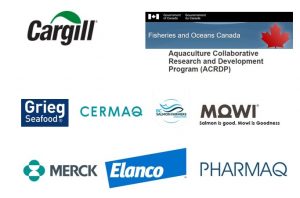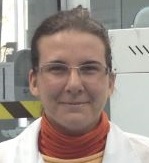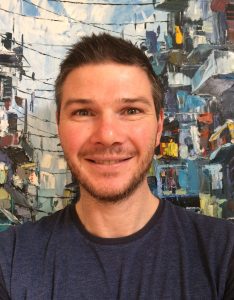Thank you very much to our sponsors!

The Aquaculture Collaborative Research and Development Program (ACRDP) is a Fisheries and Oceans Canada (DFO) initiative that promotes collaborative research and development activities between the aquaculture industry and the department. The Program teams industry representatives with DFO researchers.
This workshop is organized by the BC Centre for Aquatic Health Sciences and is moderated by Jim Powell, CEO of the BC Centre for Aquatic Health Sciences.
Eva Jakob, Cargill Innovation with Gareth Butterfield, Cargill Aqua Nutrition
Title: Genesis of the Tenacibaculum 2 Workshop

 Cargill is delighted to be the leading sponsor for the Tenaci 2 workshop. Eva and Gareth will cover the genesis of how the workshop came to be in response to client engagement. They will also present information about Cargill Innovation and advancements in the sector.
Cargill is delighted to be the leading sponsor for the Tenaci 2 workshop. Eva and Gareth will cover the genesis of how the workshop came to be in response to client engagement. They will also present information about Cargill Innovation and advancements in the sector.
Duncan J. Colquhoun, Norwegian Veterinary Institute / University of Bergen
Title: Tenacibaculosis in Norway: One disease or several?
 Skin lesions, commonly termed ‘winter-ulcer’, cause huge losses in sea-farmed Atlantic salmon in Norway annually, mainly during periods of low water temperature. While a variety of different bacteria may be associated with lesion development, Tenacibaculum species commonly predominate, particularly in lesions involving the head and jaw. Tenacibaculum infections result in direct mortality, reduced market value in surviving fish and are a significant animal welfare concern.
Skin lesions, commonly termed ‘winter-ulcer’, cause huge losses in sea-farmed Atlantic salmon in Norway annually, mainly during periods of low water temperature. While a variety of different bacteria may be associated with lesion development, Tenacibaculum species commonly predominate, particularly in lesions involving the head and jaw. Tenacibaculum infections result in direct mortality, reduced market value in surviving fish and are a significant animal welfare concern.
As a public institution providing advice to both governmental and industrial bodies, the Norwegian Veterinary Institute has carried out research on tenacibaculosis for a number of years, with histopathological studies, bacterial characterisation/description and development of diagnostic tools as primary research aims. This presentation will provide an overview of the historical and current trends in bacterial skin diseases in Norwegian aquaculture, the Tenacibaculum species and genotypes involved, as well as current diagnostic practices. Preliminary results from a current research programme directed at the molecular epidemiology of tenacibaculosis, toxin production/characterisation and risk factors for development of tenacibaculosis will be touched upon.
Rute Irgang, Universidad Andrés Bello
Title: Insights on Chilean Tenacibaculosis
Rute Irgang, Mónica Saldarriaga-Córdoba and Ruben Avendaño-Herrera
 Chile is the second largest producer of salmonids worldwide. The success and sustainability of Chilean aquaculture largely depends on the control of endemic and emerging pathogens. Although the first report of Tenacibaculum dicentrarchi was in 2012, this bacterium has been detected in Chilean Atlantic salmon since 2010 and, more recently from an autochthonous fish species. Presence of Tenacibaculum finnmarkense was first confirmed by genomic studies. Today, Tenacibaculosis is a disease commonly reported in farmed fish in association with T. dicentrarchi and T. finnmarkense, but other variants and/or new species of Tenacibaculum have been recently isolated from outbreaks. All of the above made that in 2018 have been considered by the Chilean National Fisheries and Aquaculture Service (SERNAPESCA) to include Tenacibaculum spp. in List 3 of the Chilean Regulation of Protection, Control and Eradication of High-Risk Diseases for Aquaculture species. In 2019, the losses by Tenacibaculum spp. Has already reached 10% of the total salmon production. In this research, we provide lights to the problem of diagnostic Tenacibaculosis in Chile and other finding that will help on the development of appropriate and effective vaccine(s) against this pathogen groups.
Chile is the second largest producer of salmonids worldwide. The success and sustainability of Chilean aquaculture largely depends on the control of endemic and emerging pathogens. Although the first report of Tenacibaculum dicentrarchi was in 2012, this bacterium has been detected in Chilean Atlantic salmon since 2010 and, more recently from an autochthonous fish species. Presence of Tenacibaculum finnmarkense was first confirmed by genomic studies. Today, Tenacibaculosis is a disease commonly reported in farmed fish in association with T. dicentrarchi and T. finnmarkense, but other variants and/or new species of Tenacibaculum have been recently isolated from outbreaks. All of the above made that in 2018 have been considered by the Chilean National Fisheries and Aquaculture Service (SERNAPESCA) to include Tenacibaculum spp. in List 3 of the Chilean Regulation of Protection, Control and Eradication of High-Risk Diseases for Aquaculture species. In 2019, the losses by Tenacibaculum spp. Has already reached 10% of the total salmon production. In this research, we provide lights to the problem of diagnostic Tenacibaculosis in Chile and other finding that will help on the development of appropriate and effective vaccine(s) against this pathogen groups.
Acknowledgments: FONDECYT 1190283, FONDAP 15110027 and Merck for sponsorship of RI
Tim Hewison, Grieg Seafood BC
Title: Yellow Mouth – the Grieg Seafood Experience in BC
 Yellow Mouth is a disease that manifests itself post transfer of smolts into the saltwater sea pens. The bacteria Tenacibaculum maritimum is consistently isolated from fish that have died presenting clinical signs of yellow plaques inside the mouth. Grieg Seafood BC farms Atlantic salmon in 5 different regions around Vancouver Island. From these regions both the CAN1 and CAN2 strains have been isolated. The disease first manifests at different times within the regions starting 10 days up to 70 days post transfer to saltwater. Mortality rates for the regions range between 0.15% up to 4.98%. Antibiotics are used to the treat the disease. The number of times the disease is treated varies between the regions from an average of 0.75 treatments per cage up to 5.41 treatments per cage. Factors influencing the disease include salinity, smoltification, and stressors on the fish (transportation, presence of harmful algae). The disease will eventual abate when the fish reach a certain size. It is unknown whether this is a function of the immunology of the fish or the mechanisms involved with the disease.
Yellow Mouth is a disease that manifests itself post transfer of smolts into the saltwater sea pens. The bacteria Tenacibaculum maritimum is consistently isolated from fish that have died presenting clinical signs of yellow plaques inside the mouth. Grieg Seafood BC farms Atlantic salmon in 5 different regions around Vancouver Island. From these regions both the CAN1 and CAN2 strains have been isolated. The disease first manifests at different times within the regions starting 10 days up to 70 days post transfer to saltwater. Mortality rates for the regions range between 0.15% up to 4.98%. Antibiotics are used to the treat the disease. The number of times the disease is treated varies between the regions from an average of 0.75 treatments per cage up to 5.41 treatments per cage. Factors influencing the disease include salinity, smoltification, and stressors on the fish (transportation, presence of harmful algae). The disease will eventual abate when the fish reach a certain size. It is unknown whether this is a function of the immunology of the fish or the mechanisms involved with the disease.
Øyvind Jakobsen Brevik, Cermaq Norway
Title: A brief history of Tenacibaculosis in Arctic salmon farming
 Ulcerative diseases have been a challenge for the Norwegian salmon farming industry since the early 90`S. A decade ago a “new” type of skin lesions was observed on newly sea transferred salmon that had a different clinical presentation than the “winter ulcers disease”. The typical clinical signs of this “new” disease were lesions mainly on the non-scaled covered parts of the salmon skin with severe jaw erosion. The lesions typically presented with a yellow colored margin that was dominated by long rod-shaped bacteria when seen through a light microscope. These bacteria were later described as a novel species: Tenacibaculum finnmarkense, and found to be the cause of the observed disease. This presentation will summarize our experience and knowledge on tenacibaculosis in Arctic salmon farming.
Ulcerative diseases have been a challenge for the Norwegian salmon farming industry since the early 90`S. A decade ago a “new” type of skin lesions was observed on newly sea transferred salmon that had a different clinical presentation than the “winter ulcers disease”. The typical clinical signs of this “new” disease were lesions mainly on the non-scaled covered parts of the salmon skin with severe jaw erosion. The lesions typically presented with a yellow colored margin that was dominated by long rod-shaped bacteria when seen through a light microscope. These bacteria were later described as a novel species: Tenacibaculum finnmarkense, and found to be the cause of the observed disease. This presentation will summarize our experience and knowledge on tenacibaculosis in Arctic salmon farming.
Kathleen Frisch, Cermaq Canada
Title: Tenacibaculosis (mouthrot) in Western Canadian salmon farming
 In the Pacific Northeast, Tenacibaculum maritimum has caused the disease mouthrot (yellow mouth) in farmed Atlantic salmon smolts since the late 80s, and continues to be a major health and welfare problem to the industry. Smolts recently transferred into saltwater are the most susceptible and affected fish have characteristic small (usually < 5 mm) yellow plaques. This disease is distinct from tenacibaculosis caused by T. finnmarkense. Isolates of T. maritimum collected from field outbreaks show a genetically homogenous population; however there are significant virulence differences between isolates that are genetically closely related. The fish die with little internal or external clinical signs other than these plaques and the mechanisms by which they die is unknown. Tissue tropism, investigated using real-time RT-PCR assay shows that T. maritimum is detectable internally in infected smolts. This combined with the fact that the bacteria can be isolated from the kidney suggests that T. maritimum becomes systemic. Infected smolts, both in field outbreaks and in bath challenges, primarily have mouth lesions, a disease that is similar to periodontal disease in mammals. Changes are focal, severe, and occur very rapidly with little associated inflammation.
In the Pacific Northeast, Tenacibaculum maritimum has caused the disease mouthrot (yellow mouth) in farmed Atlantic salmon smolts since the late 80s, and continues to be a major health and welfare problem to the industry. Smolts recently transferred into saltwater are the most susceptible and affected fish have characteristic small (usually < 5 mm) yellow plaques. This disease is distinct from tenacibaculosis caused by T. finnmarkense. Isolates of T. maritimum collected from field outbreaks show a genetically homogenous population; however there are significant virulence differences between isolates that are genetically closely related. The fish die with little internal or external clinical signs other than these plaques and the mechanisms by which they die is unknown. Tissue tropism, investigated using real-time RT-PCR assay shows that T. maritimum is detectable internally in infected smolts. This combined with the fact that the bacteria can be isolated from the kidney suggests that T. maritimum becomes systemic. Infected smolts, both in field outbreaks and in bath challenges, primarily have mouth lesions, a disease that is similar to periodontal disease in mammals. Changes are focal, severe, and occur very rapidly with little associated inflammation.
Sverre Småge, Cermaq Norway
Title: Bacteriology of Tenacibaculum spp.
 Tenacibaculosis is a bacterial ulcerative skin disease of many economically important farmed fish species worldwide caused by members of genus Tenacibaculum. For the Norwegian salmon farming industry, however, Tenacibaculosis was not recognized as an important disease until 2010. Since then, the increased use of media supporting Tenacibaculum growth has resulted in the identification of Tenacibaculum spp. from a large number of outbreaks of skin lesions/ulcers. An introduction into the bacteriology of Tenacibaculum spp. will be given in this presentation. This includes how to isolate, identify, grow and preserve Tenacibaculum spp. from skin lesions of farmed fish.
Tenacibaculosis is a bacterial ulcerative skin disease of many economically important farmed fish species worldwide caused by members of genus Tenacibaculum. For the Norwegian salmon farming industry, however, Tenacibaculosis was not recognized as an important disease until 2010. Since then, the increased use of media supporting Tenacibaculum growth has resulted in the identification of Tenacibaculum spp. from a large number of outbreaks of skin lesions/ulcers. An introduction into the bacteriology of Tenacibaculum spp. will be given in this presentation. This includes how to isolate, identify, grow and preserve Tenacibaculum spp. from skin lesions of farmed fish.
Rolf Hetlelid Olsen, Pharmaq Norway
Title: Challenge model and vaccine development – past, current and future work
 For almost a decade, PHARMAQ has been focusing on several Tenacibaculum projects with a long-term goal of developing an efficient vaccine. The projects include cultivation, characterization, development of challenge model and vaccines, and results from the latter two will be presented. We have demonstrated that salmon raises a specific immune response following vaccination with Tenacibaculum spp. vaccines and established a reproducible challenge model. Different inactivated vaccines have been tested, and although responses may be observed at the molecular level, reproducible effect data on survival cannot be confirmed. Further on, initial tests for a live vaccine principle have been performed and will be presented. Future opportunities and challenges for vaccine development will be discussed.
For almost a decade, PHARMAQ has been focusing on several Tenacibaculum projects with a long-term goal of developing an efficient vaccine. The projects include cultivation, characterization, development of challenge model and vaccines, and results from the latter two will be presented. We have demonstrated that salmon raises a specific immune response following vaccination with Tenacibaculum spp. vaccines and established a reproducible challenge model. Different inactivated vaccines have been tested, and although responses may be observed at the molecular level, reproducible effect data on survival cannot be confirmed. Further on, initial tests for a live vaccine principle have been performed and will be presented. Future opportunities and challenges for vaccine development will be discussed.
Ahmed Siah, BC Centre for Aquatic Health Sciences
Title: Genomic characterization of Tenacibaculum spp. – Insight on virulent and antibiotic resistant factors
Siah A, Richmond Z, Powell J, Rodriguez JF, MacKinnon A.
 Tenacibaculosis and Yellow Mouth are emergent diseases in Canada and can cause significant outbreak events resulting in significant losses. The use of antibiotic to treat tenacibaculosis currently represents the only treatment to combat the disease in BC and worldwide. For a more sustainable aquaculture, alternative solutions are needed to mitigate the problem. This study aimed at unravelling more information on the genomic features of Tenacibaculum species inhabiting both Canadian coasts. Results showed that both T. maritimum and finnmarkense were isolated in British Columbian waters whereas only T. finnmarkense was present in Eastern Canada. Genomic features with foci on commonalities and differences of virulent and antibiotic resistant factors will be highlighted and discussed. This information will help fish health professionals and veterinarian better mitigate at the farm level and help pharmaceutical companies develop efficacious vaccine against Tenacibaculum species.
Tenacibaculosis and Yellow Mouth are emergent diseases in Canada and can cause significant outbreak events resulting in significant losses. The use of antibiotic to treat tenacibaculosis currently represents the only treatment to combat the disease in BC and worldwide. For a more sustainable aquaculture, alternative solutions are needed to mitigate the problem. This study aimed at unravelling more information on the genomic features of Tenacibaculum species inhabiting both Canadian coasts. Results showed that both T. maritimum and finnmarkense were isolated in British Columbian waters whereas only T. finnmarkense was present in Eastern Canada. Genomic features with foci on commonalities and differences of virulent and antibiotic resistant factors will be highlighted and discussed. This information will help fish health professionals and veterinarian better mitigate at the farm level and help pharmaceutical companies develop efficacious vaccine against Tenacibaculum species.
Daniel R. Barreda, University of Alberta
Title: Functional tools for amelioration of disease based on dynamic temperature control
 We have recently identified new functionality in the fish immune system. Contrary to the long-standing view, they may not have an inferior capacity to defend against and remember pathogens when compared to mammals. However, because fish are cold-blooded, they require movement to/from warmer temperatures at different stages of disease to activate protective fever mechanisms. This behavioural thermoregulation (BTR) a) enhances the induction of antimicrobial defenses, b) conserves energy and minimizes tissue damage through effective control of inflammation, c) improves wound repair, and d) increases engagement of adaptive immunity, which is necessary to remember and protect from pathogens in the long-term. Currently, this represents an untapped asset for Canadian and global salmonid aquaculture and restoration efforts. This talk will provide context for these novel functionalities and explore their potential application in Tenacibaculum related diseases.
We have recently identified new functionality in the fish immune system. Contrary to the long-standing view, they may not have an inferior capacity to defend against and remember pathogens when compared to mammals. However, because fish are cold-blooded, they require movement to/from warmer temperatures at different stages of disease to activate protective fever mechanisms. This behavioural thermoregulation (BTR) a) enhances the induction of antimicrobial defenses, b) conserves energy and minimizes tissue damage through effective control of inflammation, c) improves wound repair, and d) increases engagement of adaptive immunity, which is necessary to remember and protect from pathogens in the long-term. Currently, this represents an untapped asset for Canadian and global salmonid aquaculture and restoration efforts. This talk will provide context for these novel functionalities and explore their potential application in Tenacibaculum related diseases.
Steve Leadbeater, Fisheries and Oceans Canada
Title: T. finmarkensis challenge model – Canada
S. Leadbeater, A.J. Manning, L. Hawkins and A. McKinnon
 Tenacibaculum spp. causes a condition called “mouth rot” or Tenacibaculosis. As one of a group of skin ulcerative diseases that affect farmed salmon, it results in animal losses and increased treatment costs as well as downgrading losses at harvest due to scarring on surviving animals. Through an aquaculture collaborative research development program (ACRDP) project, lab challenges were developed to successfully create ulcerative lesions and successful recovery of the pathogen for confirmation; however the pattern and appearance of ulcers can differ from clinical cases or is difficult to establish. A successful challenge models with local Canadian isolates was established and will allow for progress towards the study of disease progression and refinement vaccines for use in Canada. By focused research with local isolates increased vaccine efficacy should be possible which will provide industry with alternate and proactive strategies for mitigating the impacts of this disease. In this presentation results from a number of trials will be discussed to describe the issues faced in developing a challenge model for this opportunistic pathogen.
Tenacibaculum spp. causes a condition called “mouth rot” or Tenacibaculosis. As one of a group of skin ulcerative diseases that affect farmed salmon, it results in animal losses and increased treatment costs as well as downgrading losses at harvest due to scarring on surviving animals. Through an aquaculture collaborative research development program (ACRDP) project, lab challenges were developed to successfully create ulcerative lesions and successful recovery of the pathogen for confirmation; however the pattern and appearance of ulcers can differ from clinical cases or is difficult to establish. A successful challenge models with local Canadian isolates was established and will allow for progress towards the study of disease progression and refinement vaccines for use in Canada. By focused research with local isolates increased vaccine efficacy should be possible which will provide industry with alternate and proactive strategies for mitigating the impacts of this disease. In this presentation results from a number of trials will be discussed to describe the issues faced in developing a challenge model for this opportunistic pathogen.
Bogdan Vornicu, Mowi Canada West
Title: Tenacibaculum spp. and the marine environment: missing links between environmental conditions and MMY outbreaks
 The presentation aims to underline the links and the gaps between the environmental conditions and the presence of Tenacibaculum spp. in the marine environment. Past researches on Tenacibaculum spp. hosts, geographical distribution and interaction with phytoplankton communities are reviewed. The presentation also includes a briefly overview of the main research focus areas conducted to date. The MMY outbreak research studies are driven by the big economical and biological impact of the disease on finfish aquaculture industry. In response, the industry has developed clear monitoring and response procedures to mitigate and limit the losses. Less studied aspects of MMY outbreaks, correlated with assumptions, are presented as possible future research opportunities for a better understanding of the pathogen transmission routes.
The presentation aims to underline the links and the gaps between the environmental conditions and the presence of Tenacibaculum spp. in the marine environment. Past researches on Tenacibaculum spp. hosts, geographical distribution and interaction with phytoplankton communities are reviewed. The presentation also includes a briefly overview of the main research focus areas conducted to date. The MMY outbreak research studies are driven by the big economical and biological impact of the disease on finfish aquaculture industry. In response, the industry has developed clear monitoring and response procedures to mitigate and limit the losses. Less studied aspects of MMY outbreaks, correlated with assumptions, are presented as possible future research opportunities for a better understanding of the pathogen transmission routes.
Krishna K Thakur, University of Prince Edward Island with James Wynne, Agriculture & Food, CSIRO Marine Laboratories
Title: Epidemiological investigation of Tenacibaculosis in farmed salmon in BC: what we know and our proposed approach
Krishna Thakur, James Wynne, Ahmed Siah

 Tenacibaculosis is an emerging disease for British Columbia (BC) salmon farms. Tenacibaculum maritimum is believed to be the principal causative agent of tenacibaculosis in BC. However, other Tenacibaculum species have been identified in Norway and Chile. We surmise that Tenacibaculum spp. are present on the farms as opportunistic bacteria and outbreaks result from dysbiosis in the microbial community of affected fish, due to stressors, such as increased water temperature, plankton etc. The overall objective of this prospective on-farm research is to elucidate the interactions between host, MR pathogen(s), and environment. Specifically, we are investigating the potential environmental sources of the causative agent(s) using PCR screening, using 16S microbiome to evaluate profile differences in microbial communities between healthy and clinical tenacibaculosis in fish, assessing the association of environmental factors with outbreaks in BC, and then applying epidemiological methods to help understand the complex causal pathway/s of the disease.
Tenacibaculosis is an emerging disease for British Columbia (BC) salmon farms. Tenacibaculum maritimum is believed to be the principal causative agent of tenacibaculosis in BC. However, other Tenacibaculum species have been identified in Norway and Chile. We surmise that Tenacibaculum spp. are present on the farms as opportunistic bacteria and outbreaks result from dysbiosis in the microbial community of affected fish, due to stressors, such as increased water temperature, plankton etc. The overall objective of this prospective on-farm research is to elucidate the interactions between host, MR pathogen(s), and environment. Specifically, we are investigating the potential environmental sources of the causative agent(s) using PCR screening, using 16S microbiome to evaluate profile differences in microbial communities between healthy and clinical tenacibaculosis in fish, assessing the association of environmental factors with outbreaks in BC, and then applying epidemiological methods to help understand the complex causal pathway/s of the disease.
Simon Jones, Fisheries and Oceans Canada
Discussion: Identifying Knowledge Gaps and Research Opportunities
 Simon will lead the Q & A session of the workshop where the participants and speakers identify knowledge gaps. From there Simon will help document the research opportunities and prospects that will form the foundation of future collaborative work. The long-range plan is to have a Tenaci 3 workshop where the talks are short and the victories great.
Simon will lead the Q & A session of the workshop where the participants and speakers identify knowledge gaps. From there Simon will help document the research opportunities and prospects that will form the foundation of future collaborative work. The long-range plan is to have a Tenaci 3 workshop where the talks are short and the victories great.